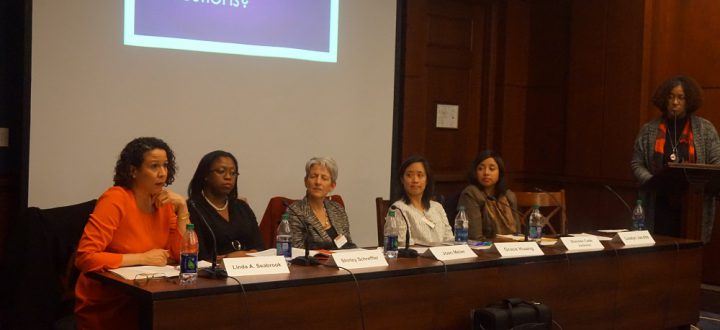Futures Without Violence Unveils Re-Designed Workplaces Respond Website

National Resource Center Relaunched on 23rd Anniversary of the Violence Against Women Act
SAN FRANCISCO – September 2017 – “My ex-husband tried to destroy my ability to work – but I refused to let him win,” said Sherri, a survivor of domestic violence who overcame her former spouse’s continual harassment and abuse that impacted both her workplace and her career.
Sherri’s Story of Strength is among those featured at www.workplacesrespond.org, the newly re-designed website for Workplaces Respond to Domestic and Sexual Violence: A National Resource Center (Workplaces Respond). Futures Without Violence (FUTURES) is proud to unveil this significantly improved resource, which is authorized by the Violence Against Women Act (VAWA), on the 23rd anniversary of VAWA’s enactment.
“Although Sherri’s employer took some initial steps to enhance the security of her workplace, she was ultimately asked to leave her job on the basis that her abuser’s conduct was a safety threat to customers and other employees,” said Linda A. Seabrook, FUTURES’ General Counsel. “Her story is one of setback but also resilience. Fortunately, Sherri eventually found safety and is self-employed, but many survivors who are unable to change their jobs face the impossible choice between their personal safety and feeding their families.”
Workplaces Respond, spearheaded by FUTURES in partnership with the U.S. Department of Justice Office on Violence Against Women, was established by the 2005 VAWA reauthorization to educate, train, and empower employers, survivors, co-workers, advocates, labor unions, and worker centers to prevent and appropriately respond to domestic and sexual violence, trafficking, and stalking impacting workers and the workplace.

As part of VAWA’s broader mandate to develop programs, policies, and practices aimed at ending domestic violence, dating violence, sexual assault, and stalking, Workplaces Respond’s re-designed website is the centerpiece of a wide array of outreach, trainings, and technical assistance offered to workplace stakeholders throughout the country. Over the course of twelve years, FUTURES and its partners have continuously enhanced available resources (including factsheets, reports, workplace tools, and awareness-raising materials) with the goal of shifting the culture of workplaces toward support, safety, and resilience.
“One in four women experience domestic violence at some point in their lives,” Seabrook said. “With studies indicating that 60 percent of domestic violence survivors surveyed reported losing their jobs, and 96 percent reported their work performance suffered as a consequence of the abuse, gender-based violence diminishes the safety and productivity of every workplace.
“We spend most of our waking hours at work,” Seabrook added. “That’s why the workplace presents a critical opportunity for intervention to help women move from victims to survivors, and make workplaces safer for all.”
The new www.workplacesrespond.org was designed and built by Wide Eye Creative.
About FUTURES
Futures Without Violence is a national health and social justice nonprofit that develops groundbreaking programs, policies, and campaigns to empower individuals and organizations working to end violence against women and children. Striving to reach new audiences and transform social norms, we train professionals such as doctors, nurses, judges, educators and athletic coaches on improving responses to violence and trauma. We also work with advocates, policymakers, and others to build sustainable community leadership and educate people everywhere about the importance of respect and healthy relationships. For more information, visit www.futureswithoutviolence.org.




